The painterly foliage already has us in thrall of fall. In addition, the season's bumper crop of brilliant berries now adorning flowering shrubs will surely do the same. Roses, viburnums, snowberries, and hollies are all loaded with colorful berries that shine in fall’s glowing sunlight.
Think of fall as the "other" fruit season when nature increases production so plants can set seeds for next year. Depending on the plant in question, they provide incredible edibles for migrating and wintering birds (and, sometimes, for us, too).
Here are a few late fruiting shrubs to add another layer of magic to your autumn garden.
Brilliant Red Chokeberry
Improved, compact version of the highly ornamental North American native plant. It contains spring flowers and abundant glossy fall fruit and brilliant foliage. Up to 8′ tall and wide. Partial shade to full sun. zone: 4 – 9
Use: Ideal for wet, boggy soils. Fruits are good for preserves.
Fifteen Fall Fruiting Shrubs
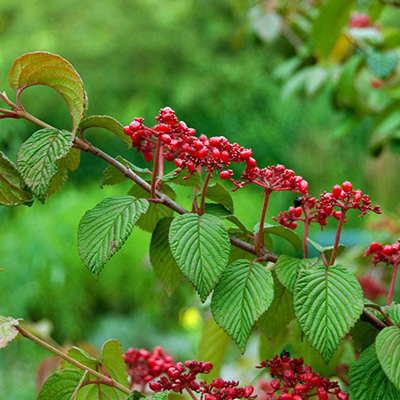
Doublefile Viburnum
Zone: 5 – 8
Lush layers of the horizontal branches of this shrub give it a beautiful form in leaf, flower and berry. Up to 8′ tall, 10′ wide. Partial to full sun.
Use: Where you can give it room to spread its branches. Fruits are ornamental, but loved by birds.
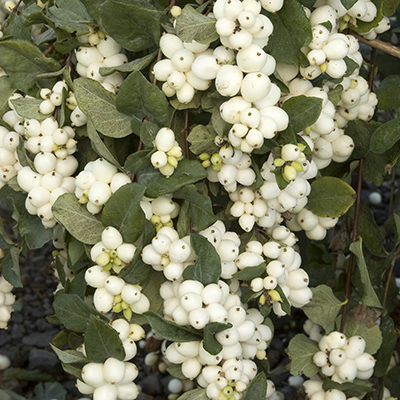
Bright Fantasy™ Snowberry
Zone: 3 – 7
Native to N. America, snowberries produce bountiful branches of fall berries that often hold into winter. Excellent for adding interest to cold zone gardens. Up to 4′ tall and wide. Partial to full sun.
Use: Berries are best left to the birds. Stems are lovely in fall arrangements.
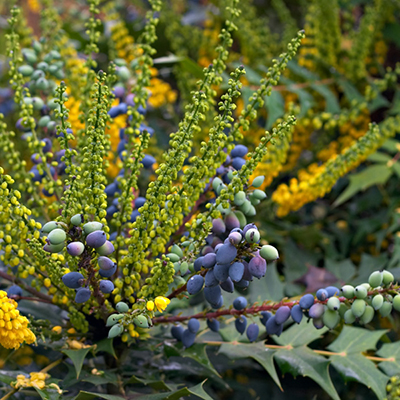
Charity Mahonia
Zone: 7 – 9
Statuesque, carefree shrub develops clusters of black ornamental berries by late summer and fall. A strong focal point in the landscape. Up to 15′ tall and wide. Full shade to partial sun.
Use: Where you need a major impact in the winter garden. Berries are for the birds.

Gotemba Golden Japanese Spikenard
Zone: 4 – 10
Dies to the ground and comes back tree-like in spring. Fall fireworks of shiny purplish berries. Up to 8′ tall and wide annually. Partial shade to partial sun.
Use: In a semi-shaded border. Berries are best left to birds.
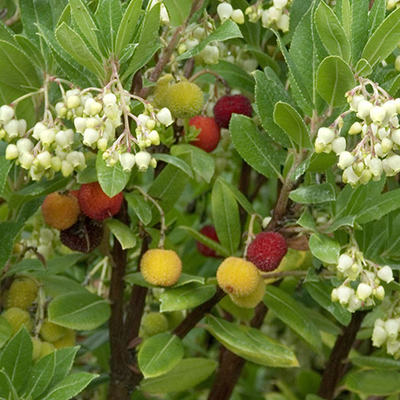
Marina Strawberry Tree
Zone: 7 – 9
Delightful small garden tree with handsome cinnamon-hued bark and very ornamental red and yellow strawberry-like fruit in fall and winter. Up to 30′ tall and wide. Full sun.
Use: Good firescaping option. Fruits are edible and commonly used in preserves, wines and liqueurs. Birds flock to them.
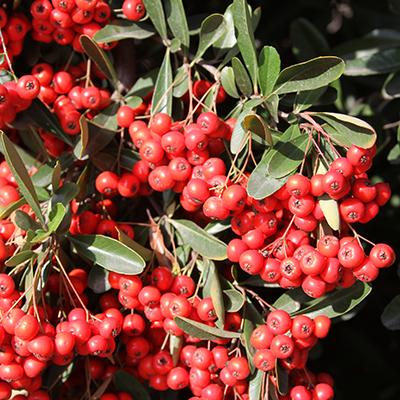
Victory Pyracantha
Zone: 7 – 9
Dark foliage and bright red berry clusters make a fine addition to the mixed border or wildlife garden. Plant several to form an informal screen or security barrier. Up to 8′ tall and wide. Full sun.
Use: Espalier or leave it free standing. Fruits are seedy, but good for jellies.
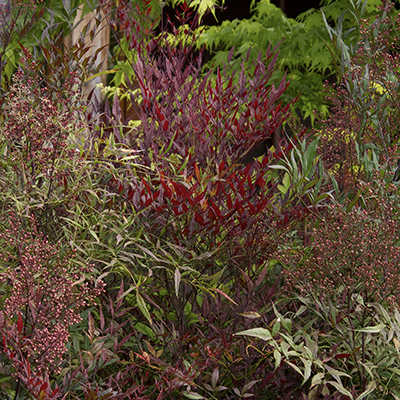
Plum Passion® Heavenly Bamboo
Zone: 6 – 11
New growth is deep purple-red, turning slightly redder in the winter. And, those berries! Evergreen in warmer zones. Up to 5′ tall, 3′ wide. Partial to full sun.
Use: Elegant foundation or low hedge option. Berries for birds or floral arrangements.
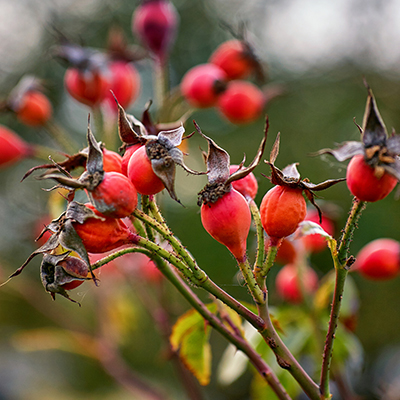
Flower Carpet® Amber Groundcover Rose
Zone: 4 – 10
Easy care landscape rose produces a huge crop of small-to-medium sized bright red hips on longer stems. Up to 3′ tall and wide. Full sun.
Use: Massed or in containers. Edible berries can be used in cooking and crafts.
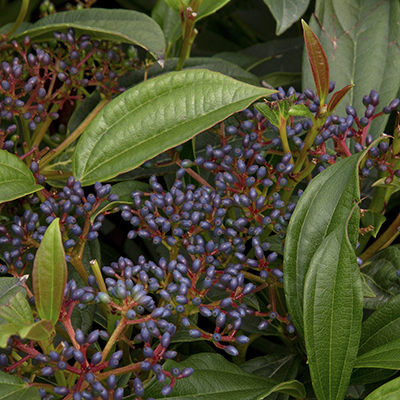
David Viburnum
Zone: 7 – 9
Showy, low-growing, compact, evergreen to semi-evergreen shrub valued for its glossy dark green leaves and metallic turquoise blue fruit. Up to 3′ tall, 4′ wide. wide. Partial to full sun.
Use: Elegant addition to foundation plants. Fall berries for wildlife.
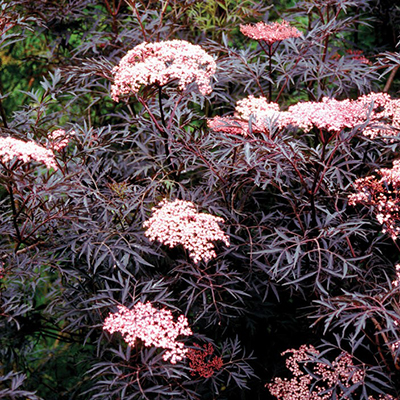
Black Tower Elderberry
Zone: 4 – 8
Upright form creates a garden spire festooned with dark foliage, and bright-pink flowers followed by abundant blackish-red berries. Up to 8′ tall, 4′ wide. Full to partial sun.
Use: Add height to borders. Berries are edible and provide forage for wildlife.
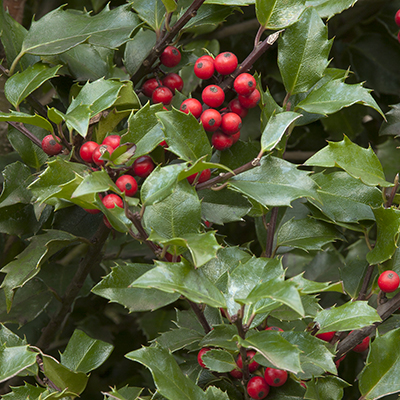
Berri-Magic® Kids’ Holly Combination
Zone: 5 – 9
Berries are assured because a male pollenizer is planted in the same container as fruiting female. Up to 8′ tall, 6′ wide. Partial to full sun.
Use: Single specimen or dense hedge. Berries for wildlife and crafts.
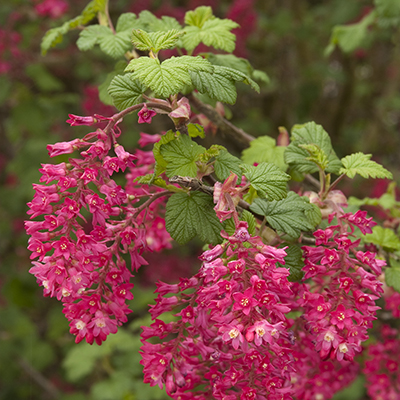
King Edward VII Flowering Currant
Zone: 6 – 8
N. American native compact shrub produces hummingbird-favorite vivid, crimson spring flowers followed by glossy blue-black berries in fall. Up to 6′ tall and wide. Partial to full sun.
Use: Add to mixed shrub borders. Berries are edible, but seedy–birds love them!
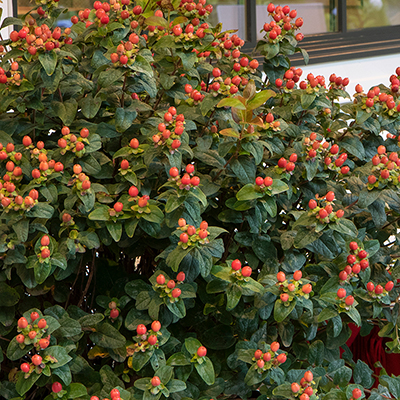
FloralBerry™ Pinot St. John’s Wort
Zone: 5 – 9
Clusters of bright red berries on well-branched, rust resistant plants with handsome dark green foliage. Up to 3′ tall and wide. Partial shade to full sun.
Use: Lovely massed for foundations or at front of deep borders. Berries for wildlife and crafts.
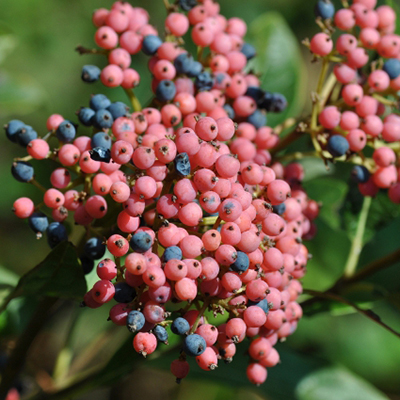
Winterthur Smooth Viburnum
Zone: 5 – 9
Fragrant, creamy white flowers, followed by white fruit that darkens to pink before maturing to blue. Shiny deep green foliage turns cinnabar-red in the fall. Up to 10′ tall, 6′ wide. Partial to full sun.
Use: Good for low or damp spots. Berries are for the birds.

Pink Rugosa Rose
Zone: 3 – 9
Long flowering, rose hip forming, thicket developing, salt and wind tolerant, and disease-resistant, these are both hardy and beautiful. Up to 8′ tall and wide. Full sun.
Use: Erosion control and impenetrable hedges and borders. Edible berries for birds, cooking, crafts.
We hope you enjoyed this little walk-through of some of the shrubs that make loads of berries in the fall.
Did you find this story useful and interesting? Please share it with others who also love to garden (use the icons at the top of this page). And, consider subscribing to our monthly newsletter to be in the know! (Plant Savvy, sent the first Thursday of each month direct to your inbox.)
If you need specific advice for a tricky spot, please leave a comment below. For even more choices, please consult with your local garden center (find one here).




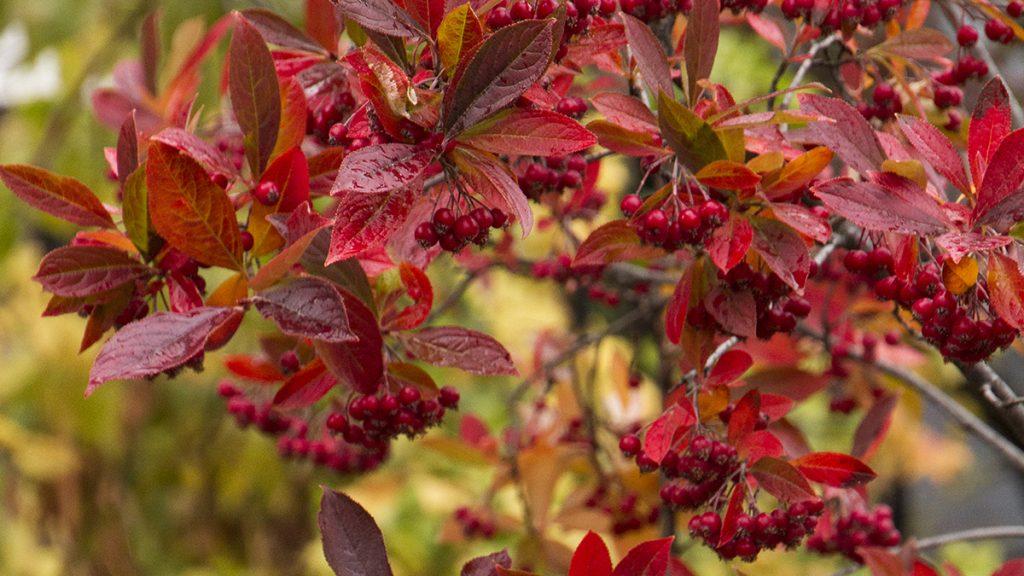
Please login to comment.
Don't have an account?
Sign Up for free